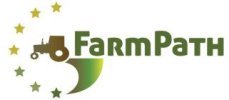Countryside Consumption
In Europe today, there are three main sets of drivers that shape transitions in the countryside: production activities and market driven agriculture, related to issues of food safety and security is one of them; the protection of the environment and natural resources, as well as nature conservation, is one of the others; and finally the consumption of the agricultural landscape for activities such as recreation, leisure, cultural enjoyment and residential purposes, is another. This consumption of the countryside is generally not acknowledged in the analysis of the farming sector, but as it is growing and spreading to all European regions, it may also be influencing production activities. Not only are the new consumers of the countryside influencing farmers’ behaviour and also creating the possibility for emerging niche markets to grow, but also these new comers may be farmers themselves, driven by multiple motivations, searching for novel production and commercialization models, and developing what is now called lifestyle farming.
In this set of studies, we focus on ownership and management of farmland, by people have an activity and income outside farming, but are managing production units or developed new ways to manage their land. There are in this group both neo-rural owners and rural people, being the main common dimension the fact that they are not full time farmers depending mostly on farm income and farmers social networks. We look particularly at small or medium scale farmland, the type of farm structure more attractive for new owners. We try to understand what is included in this lifestyle farming, the range of this phenomenon and especially what are the motivations of these new farmers and how they establish relations or influence and are influenced by those who have been traditionally farmers in the studied regions. And also, how this new ways of managing the land is acknowledged by the existing organizations within the farming sector, and by the social networks related with farming life. The three countries participating in the study of this phenomenon are the UK, with an area in Scotland for application, Bulgaria, and Portugal.
If you would like to know more about this, click here

Highland cow in a lifestyle farm, Aberdeenshire, Scotland. Lifestyle land managers are more likely to produce rare breed livestock, like this one, than commercial farmers (Photo courtesy of Lee-Ann Sutherland)




